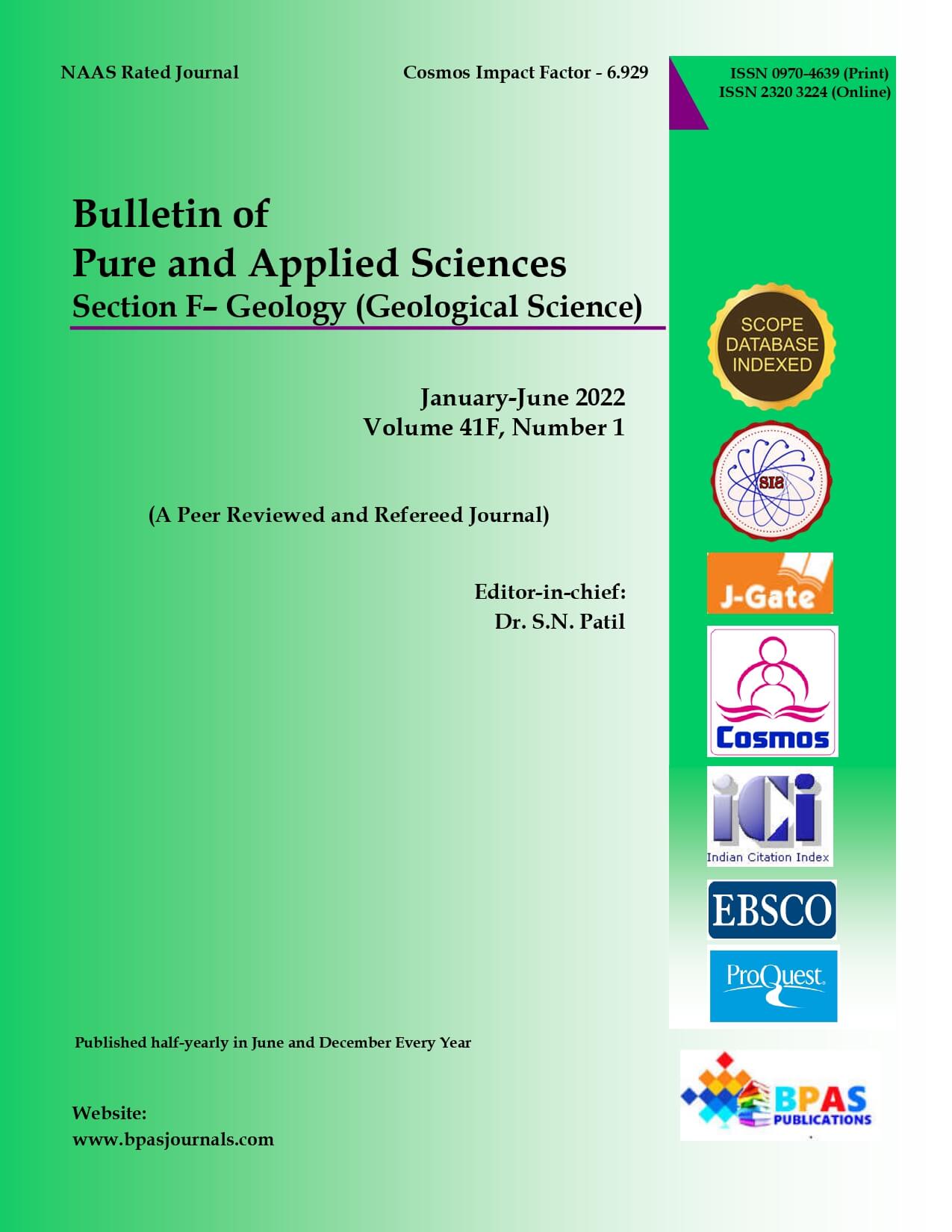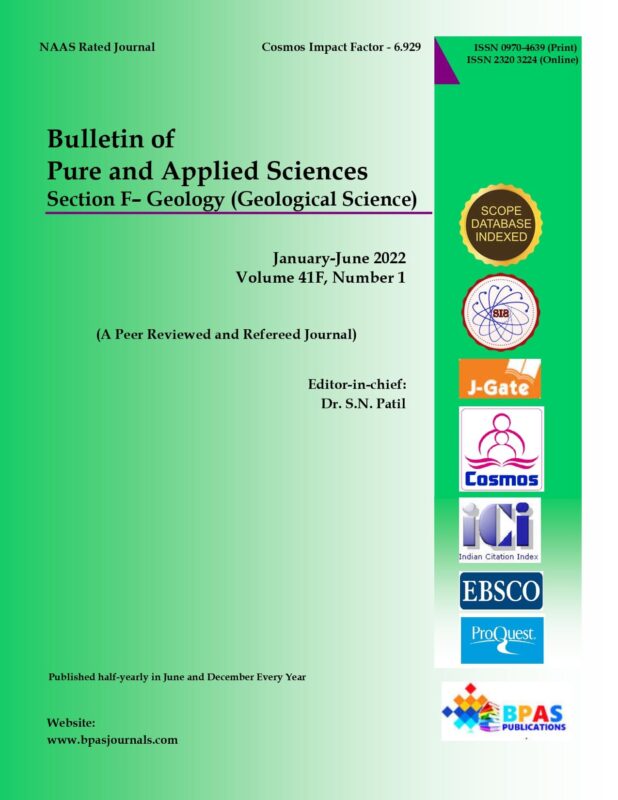View cart “Hydrogeochemical Characteristics of Groundwater Influenced by Seawater Intrusion in Coastal Aquifer of Guhagar, Ratnagiri District, Maharashtra (India)” has been added to your cart.
Morphometric Analysis of Peddavagu Sub-watershed of Krishna River, Maddur Mandal, Mahabubnagar District, Telangana State
9.38$
Year : 2022,
Volume & Issue : BPAS-Geology 41F(1), JAN-JUN 2022
Page No. : 1-11,
Article Type : Original Aticle
Article DOI : 10.5958/2320-3234.2022.00001.4 (Received on 05.09.2021, Revised on 28.12.2021, Accepted on 24.01.2022)
Categories: 41F(1), JAN-JUN 2022, BPAS-Geology
Description
Description
*Ch. Nagaraju1, G. Prabhakar2, Ishrath3
Author’s Affiliation : 1,2,3Department of Geology, University College of Science, Osmania University, Hyderabad, Telangana 500007, India.
Corresponding Author : Ch. Nagaraju, Department of Geology, University College of Science, Osmania University, Hyderabad, Telangana 500007, India.,
E-Mail:-nagarajuch.geo@gmail.com, prabhakarouhyd@gmail.com
Abstract
The study of Morphometric investigation of Peddavagu sub-watershed of Krishna river basin of Maddur Mandal, Mahabubnagar District, Telangana. The watershed overspread an area of 230.77 sq.km in the Survey of India toposheet number 56H/9 on a scale of 1:50,000. The watershed area lies in the middle of latitudes 16045’00” and 17000’00” N and longitude 77045’00” and 77030’00”E. The effluent basin as been conducted based on the secondary basis. Watershed improvement and administration plans are further important for connecting exterior water and ground water resources in arid and semi-arid region. The growth of Morphometric methods was a main advance in the measurable explanation of the geometry of the drainage basin and its network which helps in describing the drainage network. This Research was assumed to determine the drainage characteristic of Peddavagu sub-watershed. The SRTM data has been downloaded from GLCF website. The downloaded has been analyzed using Arc GIS software. The several linear parameters (stream order, stream number, stream length, stream length ratio, bifurcation ratio, drainage density, texture ratio, stream frequency) and shape factor (compactness coefficient, circulatory ratio, elongation ratio, form factor) of the drainage were computed. The total number of streams are 969 in that 665 are 1st order , 202 are 2nd order ,76 are 3rd order, 21 are 4th order, 4 are 5th order and 1 are 6th order streams. The streams have been formed dendritic drainage pattern. The distance of the steam segment is maximum for first order stream and decreases as the stream order increases. The result of drainage density shows the value 2.54 per Sq.km. Hence from the study it is clear that the Morphometric analysis based on GIS technique is very useful to recognize the main geo-hydrological features and for watershed development and management.
Keywords
Morphometric, Drainage basin, Watershed and Streams.


